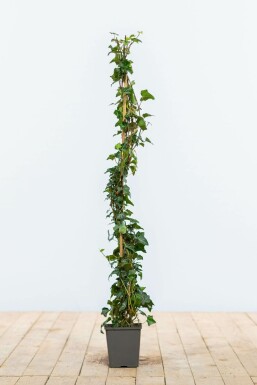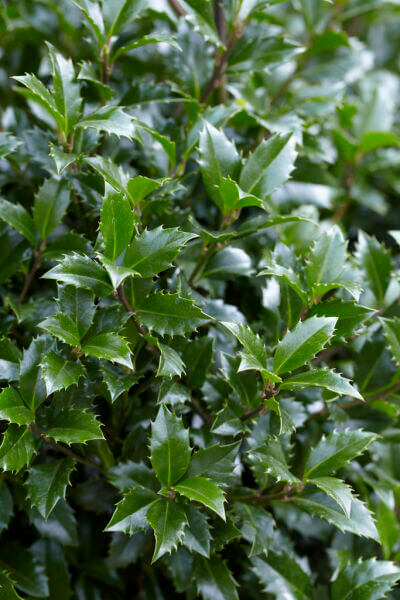Best Hedging Plants For Spring Flowers
Enhance your garden's appeal with rich hedge ranges such as Yew (Taxus), Thuja, Laurel, Photinia, and Bamboo, celebrated for their structural integrity and ecological benefits.
Yew and Thuja offer evergreen protection and winter resilience, while Laurel provides fast development and broad, fragrant leaves.
Photinia adds seasonal beauty with its vibrant red foliage, and Bamboo lends a low-maintenance, tranquil ambiance.
These hedges improve air quality, lower noise, and develop tranquil, private spaces.
Correct planting, spacing, and upkeep ensure energetic growth and eco-friendly harmony.
Explore how these lavish ranges can elevate your garden's charm and wellness.
Secret Takeaways
Transform Your Garden With Lush Hedge Varieties
- Select Yew for its dense, evergreen growth and unequaled longevity.
- Go with Laurel for its fast development and broad leaves, ensuring quick personal privacy.
- Select Photinia for its dynamic seasonal foliage, which turns a striking dark red.
- Make use of Bamboo for a low-maintenance, winter-hardy hedge with visual appeal.
- Area plants 2-3 per meter and prune frequently for optimal development and health.
Popular Hedge Plants
When transforming a garden with lavish hedge ranges, it's important to consider popular hedge plants such as Yew, Thuja, Laurel, and Photinia due to their special qualities and advantages.
Yew (Taxus) is highly esteemed for its durability and thick, green growth, making it a prime option for sustaining landscapes.
Thuja is noted for its evergreen foliage and robust winter season resilience.
Photinia adds seasonal vibrancy with red leaves that darken with time, producing vibrant visual appeal.
Laurel uses quick development and fragrant, broad leaves, suitable for quick privacy.
Additionally, Bamboo is an excellent option for atmosphere, providing a low-maintenance, winter-hardy choice that enhances the garden's aesthetic with its classy, swaying walking canes.
These choices cater to a range of horticultural requirements and choices.
Advantages of Garden Hedges
Garden hedges provide a wide variety of benefits, making them a valuable addition to any landscape. These natural barriers are cost-efficient to execute and offer significant wind protection, boosting air flow and adding to noise decrease. The thick foliage of hedges like Thuja and Beech guarantees personal privacy by blocking visibility, developing a remote and peaceful environment.
Hedges also play a vital role in microclimate regulation, offering a stable environment that promotes plant growth and lessens temperature level variations. Their elaborate leaf structures filter toxins, improving air quality and adding to a healthier garden community.
Moreover, hedges master sound reduction, soaking up and deflecting sound waves to lower ambient sound levels. This dual performance of supplying both visual and acoustic personal privacy enhances the general tranquility and aesthetic appeal of any garden.
Planting and Upkeep Tips
For a successful hedge, precise preparation of the planting location is crucial. Guarantee the soil has correct pH and drainage to support strong root development.
Area the plants properly for the chosen species. Water the hedge frequently throughout its preliminary growth phase, changing as required with seasonal modifications.
Implement a methodical bug control and illness prevention technique, utilizing natural or chemical treatments when required. Routinely examine for aphids, termites, and fungal infections.
Apply mulch to maintain moisture and suppress weeds. Seasonal pruning promotes dense growth and air blood circulation, essential for plant health.
Following these guidelines will help you cultivate a dynamic, well-kept hedge that boosts the appeal of your garden.
Spacing and Cutting Standards
Spacing and Cutting Standards
Correct spacing and cutting are essential for cultivating healthy, aesthetically appealing hedges. Appropriate spacing ensures each plant receives sufficient nutrients, light, and airflow.
Follow these guidelines for optimal hedge maintenance:
- Spacing: Position hedge plants 2-3 plants per meter to motivate robust growth.
- Pruning Methods: Routine pruning is necessary for keeping wanted hedge height and shape. Cut brand-new development in summertime and cut down older wood throughout winter season.
- Seasonal Care: Adjust trimming schedules and techniques according to seasonal requirements to ensure plant health.
- Hedge Height: Frequently display and cut to preserve the desired hedge height and attain consistent looks.
Following these actions will guarantee your hedge prospers, enhancing both the appeal and performance of your garden.
Picking the Right Hedge
Selecting the Right Hedge
Selecting the proper hedge involves assessing elements such as mature height, foliage density, and ecological durability. Successful hedge plant choice requires comprehending each species' development qualities and site-specific adaptability.
For instance, Yew (Taxus) provides excellent durability and dense growth, while Thuja is noteworthy for its winter durability. Additionally, thinking about maintenance requirements is important; fast-growing species like Laurel or Privet need regular cutting, whereas low-maintenance options like Bamboo or Ivy might be preferable for those looking for minimal upkeep.
Ecological factors such as soil type, light schedule, and moisture conditions must likewise direct the choice process. This cautious method makes sure the chosen hedges will prosper, providing both visual and functional advantages to the garden landscape.
Delivery and Planting Recommendations
To guarantee your hedge plants flourish, they must be provided by specialized couriers and planted quickly upon arrival.
Follow these vital actions for successful planting:
- Soil Preparation: Improve the soil with natural matter to enhance drainage and nutrient content.
- Planting Depth: Develop a trench twice the width and equal to the depth of the root ball.
- Watering Methods: Water completely after planting, keeping the soil consistently wet however not saturated.
- Mulching: Use a layer of mulch to retain moisture and reduce weeds.
Consumer Assistance and Service
Given the vital function of prompt assistance in horticultural pursuits, our customer support team is offered 6 days a week through telephone, e-mail, and social networks to offer professional suggestions and promptly address any concerns. Their dedication to quick response times ensures customer complete satisfaction by solving questions related to plant health, optimal planting techniques, and upkeep schedules.

Response Time
Within 48 hours
Within 24 hr
This extensive assistance system, enhanced by an excellent 9.3/ 10 customer rating, highlights our commitment to improving the gardening experience for each customer.
Regularly Asked Concerns
The Length Of Time Does It Consider Hedge Plants to Develop?
Hedge plants usually need one to 3 years to end up being totally developed, with the specific period differing by types and growing conditions.
Efficient care during this important duration is essential for robust growth. Constant watering, alert weed control, and suitable fertilizer application are critical in promoting strong root development.
For example, fast-growing species like Laurel may establish faster, while slower-growing varieties such as Yew might take longer. Diligent upkeep speeds up the facility procedure, leading to thick and healthy hedges.
What Are the Best Hedge Plants for Personal Privacy?
The question of the very best hedge plants for personal privacy includes assessing evergreen and deciduous choices.
Evergreen hedges like Thuja, Laurel, and Cypress offer year-round coverage, guaranteeing constant privacy.
On the other hand, deciduous hedges such as Beech use seasonal personal privacy, shedding leaves in colder months.
Secret upkeep suggestions for privacy hedges click here consist of regular trimming, fertilizing in spring, and correct spacing-- usually 2 to 3 plants per meter.
Additionally, constant watering and persistent weed removal are vital for promoting healthy, dense development.
Can Hedge Plants Draw In Wildlife to My Garden?
Yes, hedge plants can attract wildlife to your garden by supplying important advantages like shelter, food, and nesting sites, thereby improving local biodiversity. Yew, holly, and laurel are excellent for drawing in birds, while ivy supports a variety of bugs.
Nevertheless, it is very important to keep in mind that there are some disadvantages, such as increased maintenance to manage bugs and routine upkeep. Thoroughly selecting and maintaining hedge varieties can assist balance these disadvantages and advantages, eventually promoting a sustainable and vibrant ecosystem in your garden.
Are There Any Blooming Hedge Plants Available?
Yes, there are flowering hedge plants readily available that can improve the charm of your garden.
For example, Elaeagnus, likewise referred to as Olive Willow, produces aromatic white flowers in the fall, including a touch of elegance.
Photinia, another popular option, showcases vibrant red leaves that grow into a rich green, developing a dynamic visual result throughout the seasons.
To guarantee these plants grow, it's important to practice proper pruning strategies and seasonal maintenance, such as trimming brand-new growth in the summer season and cutting back in the winter season.
These procedures will help preserve the health and visual appeal of your flowering hedges.
How Do I Avoid Insects in My Hedge Plants?
To avoid pests in hedge plants, utilize natural bug control methods and keep correct hedge care. Introduce helpful insects like ladybugs, which prey on damaging insects, to produce a well balanced ecosystem.
Frequently check your hedges for signs of invasion and promptly remove any affected parts to avoid the spread. Make sure the health of your hedges by applying balanced fertilizers and offering sufficient water.
Make use of mulching to maintain soil wetness and correct spacing to reduce plant stress and promote robust growth. These practices collectively help in decreasing bug concerns and maintaining a healthy hedge.
Conclusion
In essence, choosing the right hedge varieties such as Yew, Thuja, and Laurel can change any garden into a tranquil sanctuary. These plants provide year-round greenery, enhance aesthetic appeal, and deal useful advantages like sound reduction and wind protection.
Proper planting techniques, accurate spacing, constant watering, and seasonal cutting are crucial for ideal growth.
Trustworthy shipment services and professional client support ensure a smooth experience from purchase to planting, making it easier than ever to elevate your outside area.
Garden hedges provide a wide variety of advantages, making them an important addition to any landscape. These natural barriers are affordable to implement and supply considerable wind protection, boosting air blood circulation and contributing to noise decrease. The dense foliage of hedges like Thuja and Beech makes sure privacy by obstructing presence, producing a secluded and serene environment.

Pruning Methods: Regular pruning is important for preserving desired hedge height and shape. Trim brand-new development in summer season and cut back older wood throughout winter.